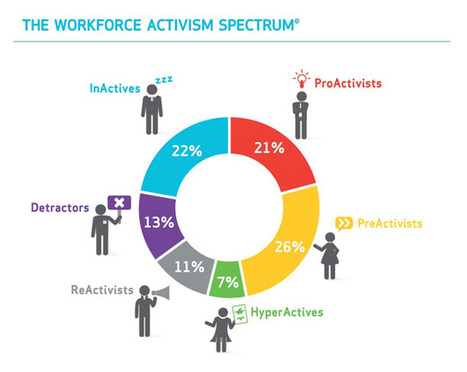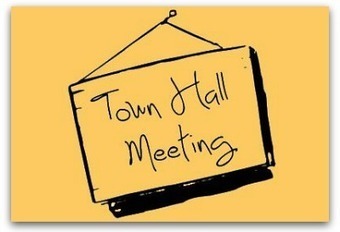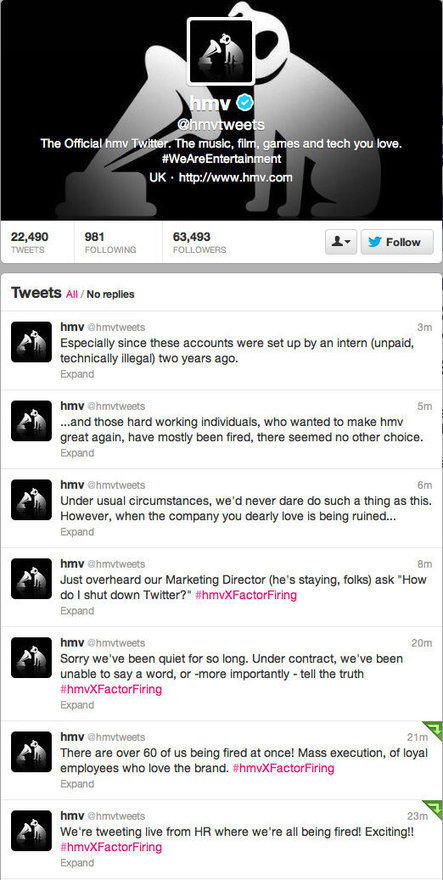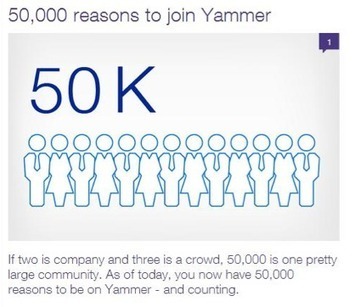 Your new post is loading...
 Your new post is loading...
Leaders of reorgs typically fall into one of two traps when communicating with their employees. We’ll call the first one wait and see and the second ivory-tower idealism. Perhaps you have seen one, or both, in your own reorgs.
In the first trap, wait and see, the leader of the reorg thinks everything should be kept secret until the last moment, when he or she has all the answers. The leader makes the reorg team and leadership swear to secrecy and then is surprised when the news leaks to the wider organization (it always does, we’re afraid). As the reorg team starts to engage with the rest of the organization, the rumors round the water cooler increase: “They were asking what my team does”; “I had to fill in an activity analysis form”; “I hear that 20 percent of jobs are going to go.” Everyone thinks the real reason for the reorg is job losses (whether it is or not). The leader, desperate to get in control of the situation, pushes the team to develop “the answer” so that he or she can tell the organization. Without an “answer,” the leader feels that any communication would come across as defensive. At most, the executive approves some question-and-answer sessions on the reorg. But a full-scale communication needs to wait. Eventually, the leader has the answer: the reorg team produces a high-level org chart. The leader then announces the new organization: here are the new leaders, here is the structure, some job losses are necessary, but this is going to help us deliver fantastic results. Employees, hearing this, hear only that their boss’s boss’s boss is going to change and that some of them are going to lose their jobs. Nothing their leader has said counters the impressions they formed at the water cooler.
Ivory-tower idealism fares little better. In this version, the leader of the reorg is finally getting a long-achieved objective: all the issues of the old organization will finally get fixed; everything the leader wanted to do, but was held back from, can now be achieved. The leader can barely contain the excitement. So psyched up by the possibilities that the reorganization offers, the leader decides to start the process with a webcast to all staff, telling them about the exciting business opportunities it will open up. The leader follows this up with a series of walk-arounds in the major plants and offices, discussing the opportunities and getting input on some of the challenges that people face in the organization today. The leader puts a personal blog on the company intranet....
Joel Gascoigne, CEO of social media tool startup Buffer, shared a 3500-word post in which he explains why he’s laying off 10 of his 94 employees. In contrast to bloodless posts from the likes of Inteland Microsoft, it indulges a different sin: oversharing. A lot of my correspondents forwarded Gascoigne’s post to me, hoping I’d praise it because it is so different from the other CEO communications I’ve shared. And there is a lot to like here: it’s extremely open, fair, and honest. Gascoigne is living his sincere promise to be transparent. But a CEO should be communicating the realities of his or her business regularly, not dropping it all at once in a 3500-word lump along with a layoff. What a team wants from their CEO is to share what’s relevant, not to share everything. This is a good example of how it’s possible to overdo transparency....
If you’re the kind of boss who fails to make genuine connections with your direct reports, take heed: 91% of employees say communication issues can drag executives down, according to results from our new Interact/Harris Poll, which was conducted online with roughly 1,000 U.S. workers.
In the survey, employees called out the kind of management offenses that point to a striking lack of emotional intelligence ;among business leaders, including micromanaging, bullying, narcissism, indecisiveness, and more. In rank order, the following were the top communication issues people said were preventing business leaders from being effective....
Who can best defend a brand’s reputation on social? According to a newly published Weber Shandwick study, the answer may come from within.
The study, conducted in collaboration with KRC Research (full PDF here), concerns trends in “employee activism”, or the ability of those within an organization to become its most prominent defenders. An online survey of 2,300 employees in 15 different markets around the world found that:
- 50% of respondents have shared something relating to their employers on social
- 33% of the sample did so on their own without encouragement from their bosses....
How corporate speak makes a tough decision look even worse in this internal memo to remaining employees...
"At Rogers Media, we are committed to delivering world-class content to consumers. It’s a new era in the media industry, one that is challenging yet full of opportunity. These changes are driven by the rapid pace of technological advancement, the increase in global choices for consumers, and an ever-changing advertising market.
Today we made changes to our business that will allow us to continue to make investments in our priority brands and strategic growth initiatives, and better position us for the future while helping us effectively manage our costs...."
Here are 5 benefits of using a mobile app for your internal crisis communications - and which industries and types of organizations would best benefit.
Intranets are a great tool for large organizations that have offices all around the country and the world, but what about when you have workers on the ground? Workers on the ground don’t necessarily have a computer in front of them at all times, but what they definitely do have is a mobile phone. Creating an app designed specifically for your internal (crisis) communications will allow you to:- Access and reach each and every member of your team, no matter where they are at any given time – and all at once...
I have evaluated dozens of CEO/executive town halls. As idealists, when we plan these events we envision a turn-of-the-century town hall during which passionate employees engage in vigorous debate with organizational leaders.... Most forums have too much content and a lengthy presentation with too much detail. In addition to substance, our leaders tend to be too positive and rarely negative, and employees don't think they are getting the truth. This sort of comment is heard: "That is not the real strategy; the real strategy happens behind closed doors." The good news is that employees tell me they really do want to know and understand strategy and what is impacting the business. They just don't believe that happens in leader forums. Senior executives tell me they want to know the best way to share their direction and strategy for the organization. Employees tell me they want the truth. They want unscripted answers and to participate in a discussion about the competing demands placed on the business....
Prescient Digital Media's 2013 study found the implementation of social intranet tools on the rise at most businesses, but satisfaction is quite low. Why aren't employees and executives happier? The firm's 2013 Social Intranet Study found that 76 percent of the companies surveyed use instant messaging, at least in some limited way. About 75 percent use blogs. Around two-thirds have wikis, discussion forums, and user comments. It's fair to say social tools are being used widely. However, only 19 percent of organizations rated their social intranet tools as good or very good. Even fewer executives, 17 percent, like them. Toby Ward, president of Prescient Digital Media, says the tools are easy to come by, but demonstrating their value is considerably tougher....
United Technologies is at the top of its game but recently announced big layoffs. Is this the new normal?... ... This growth was accomplished, however, without expanding its workforce much at all, and now UT believes it can continue to grow as it wants to while actually shrinking its employee base. It's planning to lay off 3000 workers this year, after shedding 4000 last year. Now, is this really anything new? After all, output has been going up and employment simultaneously going down in manufacturing around the world for several years now, and UTC is a big manufacturer. But two things strike me as potentially novel here. First, the company does a lot more than just make things in factories. As its website says, "United Technologies... is a diversified company that provides a broad range of high-technology products and services to the global aerospace and building systems industries." Servicing elevators, security systems, and so on, in other words, is a big part of what UTC does, and services have historically been very labor-intensive. That could be changing....
When the rumblings of an organizational crisis begin, a skilled communicator understands how critical their actions are in ensuring employees make it through the process as engaged and informed as possible. Failing to provide enough knowledge or context to your workforce could have damaging results for your company. Take the case of HMV. The entertainment retailer had a social media meltdown recently when staff took over the company's Twitter account to express anger at being fired [click on the image below to see the tweets in full]. Employees “live blogged” their own sacking on the site and HMV moved to delete the posts from the @hmvtweets account, which broadcast the news to its 60,000+ followers.... To keep employees engaged through the crisis process and protect both internal and external reputation, there are key actions you can take....
The vultures have been circling Groupon founder and CEO Andrew Mason for a while now. Today, they swooped in. With the company trading around a quarter of its IPO price and its future cloudy at best, the board officially gave Mason the boot and announced a search or a new chief executive. Mason, meanwhile, is going to fat camp. Or so he says in an amazingly self-effacing and candid goodbye letter he tweeted out to Groupon's employees (Groupon PR also confirmed it was real. Can't be too careful.). "I was fired today," Mason writes. "If you're wondering why...you haven't been paying attention." The ex-CEO then precedes to graciously take responsibility for Groupon's recent travails, before wishing his former work force the best. Say what you will about the man's business acumen, at least he's self aware....
Even with Citigroup’s huge job cut plans announced Wednesday, Hewlett-Packard Co (NYSE:HPQ) remains the leader in corporate job cuts from U.S.-based companies in 2012, according to data from Challenger, Gray & Christmas Inc. Back in May, the ailing Palo Alto, Calif.-based tech giant said it would cut 27,000 jobs to save up to $3.5 billion. H-P contributed to May being the peak month in 2012 for job-cut announcements with more than 61,000 and pointed to computer companies as one of the most vulnerable industries of the year. Shares of H-P are down more than 45% for the year....
...I’ve written before about the value of your employees, and the very smart Leon Noone has shared his thoughts on the value of looking after your employees by creating the right culture and expectations from the start, as well as continuing to live by them. Yet so many businesses miss this, and instead talk a good talk about customers while missing the walk when it comes to internal customers – your employees. They’re the folks that represent your brand in public; they’re the folks that determine the customer experience; they’re the folks that keep the wheels turning. The importance of having the right culture and making sure there’s a good fit on both sides – brand/employee and employee/brand – is evident, as highlighted in this article from Forbes...
|
Stakeholder communication: It is simply not enough for an agile product development organization to create great code and ship the resulting product like a clockwork. You also need to talk about, particularly in the beginning of your agile transition. Marketing the agile journey of product and engineering to the rest of the organization—and thus getting their buy-in—is a critical success factor to step up the game: You want to become agile, not doing “Agile”. So, learn more about ten proven stakeholder communications tactics that contribute to making this happen....
Today, with all the internal communication tools available to a workforce, emailing seems almost primitive. Though many organizations still use email, most are trying to reduce the number of emails sent in favor of a simpler, more efficient form of internal communication. Employees are relying more on intranets or enterprise social networks.
Rio Rancho Public Schools has eliminated routine "all staff" emails, such as weekly school bulletin updates, by posting such important news on the intranet. (Here's the RRPS case study.)
Though you might not be ready to eliminate every "all staff" email and all one-on-one emails, you can improve internal communications with these powerful tools:
When it comes to engaging employees on the journey to enterprise social, getting 75,000 employees or 50% of your staff to actively use one network is about as ambitious as it gets.
Veyronique Vallieres, Internal Communications and Community Manager at ABB, worked a long time on adoption as part of the company's vision to break down internal silos and enable greater collaboration across 100 countries.
"We are one of the global leaders in power and automation technologies providing literally thousands of products and solutions to reduce environmental impact around the world. Being aligned internally as an organisation is not only crucial, it is essential."...
Owned media, paid media and earned media have made up the content marketing tripod for a long time, but now the stool has a fourth leg: employed media. Find out how you can give your content effort...
...A while back, I wrote a post on the concept of a Center of Content Excellence — a new discipline and resource charged with propagating the power of content marketing, maintaining standards, and reducing duplication of effort.
Employed media is an important part of any Center of Content Excellence.
The idea is simple: If all sorts of folks in your company would and could use your great content in their interactions with the world, they’d amplify its impact many times over....
As marketers, we’re always searching for a formula for how to be successful — but there’s no formula for this:
While watching Wistia’s recent dance video promoting a feedback survey, I realized that it wasn’t the production, the camera, or the lighting that made the video so compelling, or explained why I watched and shared it with friends. It was the personality of the company’s people shining through.
Wistia offers an incredibly comprehensive guide on how to make incredible marketing videos for your company, but there’s one vital ingredient to successful marketing that can’t be taught in an instructional video.Today, it’s company culture that creates marketing messages that spread. It’s that secret sauce that’s impossible to replicate....
What started as a phenomenon on a more personal level is now extending its reach to work and offices.
Can you spot the differences between these two statements? 1. "You're required to create three videos a month." 2. "If you make the effort to create three videos each month, you'll get your own video equipment and software to use for free. Not only that, we'll recognize you as a leader in the company." It's like night and day, isn't it? According to Paolo Tosolini, director of emerging media at Run Studios, all it takes is a little incentive—a little bit of making video production into a game—to get employees excited about bringing their expertise to their company's video messaging. It's a good way to get employees to watch important videos, as well.
In a digital and social age, pipes are less important. People are the channel. You don't own or rent them. You can't control them. You can only serve and support them. This new world is disorienting because pipes and people work very differently as channels. Pipes flow out; people flow in. Content is pushed out through pipes, but pulled in through people. This reversal is shifting the balance of power. Individuals have access to information, tools, and resources once reserved for institutions. Externally, this means a shift in the relationship between customers and brands. Internally, this means breaking down the silos that once divided functions and departments. What used to be a hierarchy with the company at the top is now a network with the customer at the center. For marketers, this of course changes everything. As part of an awards program that one of us (Cara) created and the other (Mark) helped judge, we had the opportunity to see how hundreds of top marketers in Silicon Valley are engaging customers and growing revenue in this new era. The two most important principles that emerged are that customers make the best brand advocates, and entire organizations make for the best marketing teams....
As the discussion around social media evolves to social business, the social employee is becoming more and more important to the future of marketing... ... The current challenge facing businesses today is this: you can’t communicate externally unless you communicate internally. Sounds simple, right? But, unfortunately, business culture over the last 30 years (or even longer) has tended to prize cutthroat competitiveness and information hoarding as workers attempted to climb over each other in order to get to the top. So how do we change this? How do we build cultures where transparent internal communication and information sharing is prized above all else? Real culture change must come from all levels of the organization, but it must be driven and modeled by the executives in the C-Suite. Successful organizations in the new business climate have dynamic, engaging social executives who know exactly how to fuel and empower their employees and show them what it means to be social. Executives must understand that “do as I say, not as I do” won’t cut it among today’s workers. If they expect their employees to adopt new social habits, they must lead the way and model those habits first....
The chain reportedly asked managers to categorize employees as "green," "yellow" or "red," for targeting layoffs. Communication experts say the system is flawed.... In January, 5,500 Penney in-store employees were laid off. Another 300 jobs were cut at its headquarters in Plano, Texas. This isn't the first case of a company's using traffic-light colors as code for an employee's status. In 2010, telecommunications company Everything Everywhere faced harsh criticism for indicating whether employees could be laid off or not with red and green visual aids given in informational packets. JC Penney isn't disclosing the light system to store employees, but communicators say this idea is just as bad....
Bringing telecommuters back into the office has never created such an uproar! Yahoo CEO Marissa Mayer’s cuts to telecommuting, sparked catcalls from women’s groups, questions from academics, anonymous complaints from Yahoo employees and polarized opinions in the media and at office water coolers around the world. On CNN, four experts practically choked each other trying to advocate their polarized points of view on this story. It’s a fun clip to watch but it showed how strong and divided opinions are on the issue....
The research found that global best-in-class companies share four principal qualities in the way they communicate with their employees: - They have an employee-centric focus that drives communication strategy - They set benchmarks and goals that align with corporate goals - They measure performance and success toward goals, while tracking employee attitude - There is a deep-rooted desire to always improve communication with employees and build upon current success....
|




 Your new post is loading...
Your new post is loading...


































Two biggest blunders durring a re-organization? "Wait-and-see" and "ivory tower." Both lead to failure.